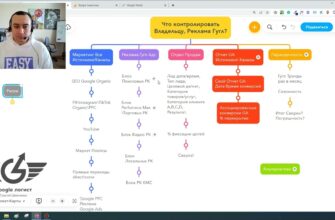- What is Zapier?
- How does Zapier automation work?
- Advantages of Zapier service
- Are there any downsides to Zapier?
- Zapier integration overview
- CRM systems
- Spreadsheets
- Services for mailing lists
- Cloud Storage
- Social networks
- How else can I use the Zapier tool?
- Using a schedule
- Email parsing
- Text translation
- PayPal
- GitHub
- Databases
- Zapier Push
- Zapier Code
- Zapier cost
Root automation is a must today for running a successful business. In this way, you can save hundreds of employees’ precious working time, which you have to pay for.
Zapier is a powerful tool that allows you to blur the boundaries between different web applications, CMS and CRM systems, which allows you to create a connection between them without the need for programming.
Acquaintance with this service will be a real breakthrough for any professional in the field of digital marketing or sales, it will increase productivity and minimize labor-intensive processes.
How many calls and sales will I get by ordering contextual advertising from you?
I need to calculate the conversion of my website Describe
the task
in the application
Calculate potential ad revenue Google
contextual advertising calculator
Next, let’s look at what Zapier is, what are its main advantages and what features of this tool can be used in your work to optimize your daily tasks.
What is Zapier?
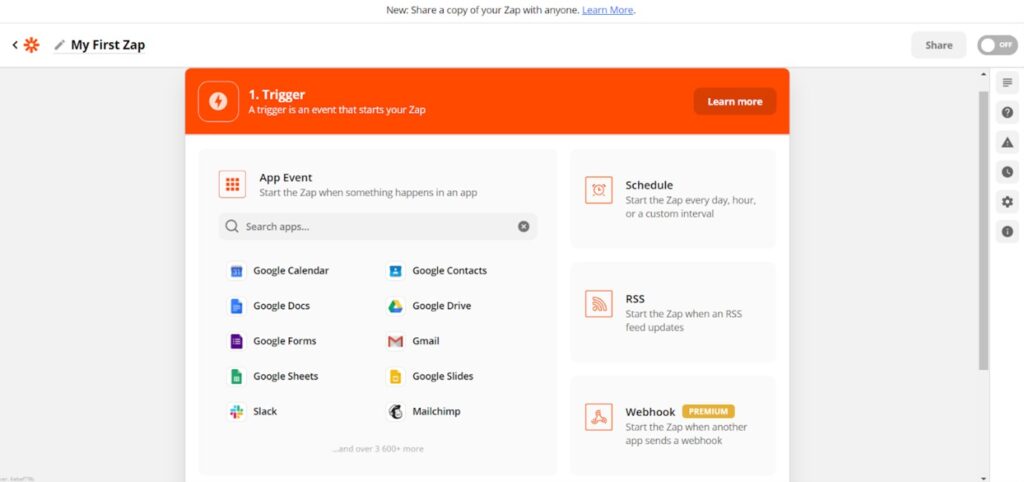
Zapier is an online service designed to automate the interaction between different web applications and cloud platforms. It helps to automatically perform tasks that are usually done manually.
This can be sending emails, creating a new task in Slack or any popular CRM system, entering information into a database, spreadsheet, and much more.
The service supports integration with Gmail, Dropbox, Trello, Salesforce, WordPress and thousands of other applications and platforms. At the same time, you can set up a chain of interactions when, upon receiving a new letter in Gmail, Zapier will save attachments from it to Dropbox, and then send a notification about this to Slack or Telegram.
How does Zapier automation work?
Any interaction in Zapier is configured using the so-called “zaps”. Zap is an automated workflow that starts with a trigger and ends with an action (a task to be completed).
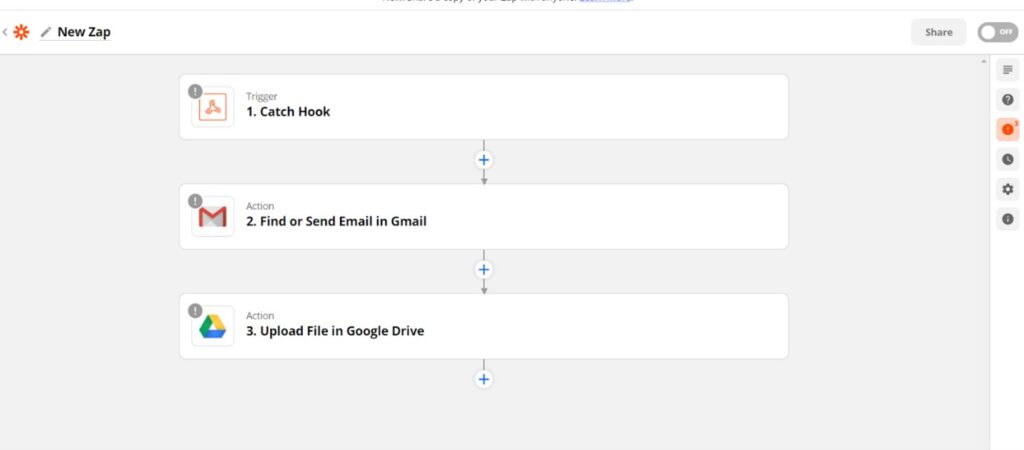
A trigger is an event that triggers an interaction process when it occurs. For example, a new post has been released in a Facebook group or Telegram channel that you follow. Zapier supports thousands of different apps, and each of them can have their own set of triggers.
After selecting a trigger, you need to select the action to be performed. During the selection process, you can set the desired process parameters. For example, when sending an e-mail, you can select the addressee, the subject of the letter, its text, etc. After setting up, you can test the operation of the zap to make sure it works as expected.
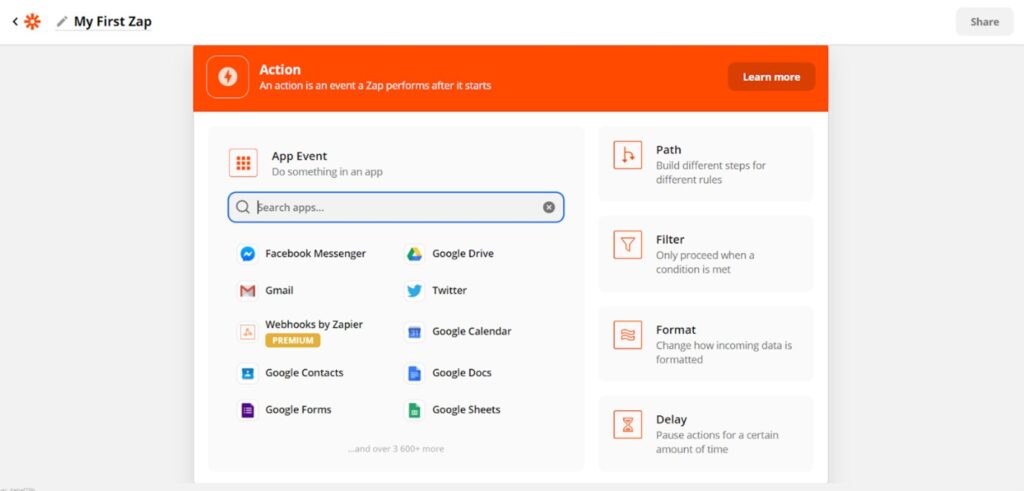
In Zapier, you can select several types of actions, depending on the required scenario:
- Application action. This is the triggering of a certain function provided in the connected application – creating a new task in Trello, adding a contact to the mailing list through MailChimp, and so on.
- Path. These are several options for action, the choice between which will depend on certain conditions. For example, when answering an e-mail, the service will analyze who exactly the incoming letter came from. And if it came from a certain subscriber, then one answer option will be sent to him, and if from all the others, then another.
- Filter. Allows you to set restrictions on execution of zaps only under certain conditions. For example, the action will be performed only if you received a message with a certain text.
- Formatting. With this interaction option, Zapier can process the information received and output it in a different format or in part. For example, the system can extract only the customer’s name from an incoming call or convert the date to the required format.
- Delayed execution. Adds a delay between different actions. For example, you need to send a reminder to an employee about a certain task an hour after it was created.
Advantages of Zapier service
- Workflow automation. The platform allows you to set up automatic execution of repetitive tasks – creating cards in Trello when you receive an email, sending notifications in Slack about new leads in CRM, updating tables in Google Sheets, etc.
- Huge number of integrations. There are over 5000 applications available – from popular services like Gmail, Google Calendar, Slack, Trello, Salesforce to specialized tools. You can link almost any program you use. For example, set up automatic upload of new requests from Google Forms to CRM or synchronize tasks between Asana and Todoist.
- Save time and increase productivity. By automating routine tasks with Zapier, you help employees focus on the really important things that require human input and creativity. Employees can save up to 10 hours per week through automation!
- Easy to set up and use. No programming skills are needed to create automation scenarios (Zaps). The intuitive visual editor allows any employee to customize the required processes – select applications, set conditions and actions. Everything is simple and intuitive.
- Scalability. With the platform, you can easily expand your automation as your business grows. On commercial tariffs, it allows you to create an unlimited number of “zaps” and run them without special restrictions. At the same time, the business owner can connect an unlimited number of employees to the service, delimiting their access rights to different scenarios of the web application.
- Stability and reliability of automation. Zapier runs like clockwork and does not tolerate errors. Thus, using this tool is even more reliable than assigning the same task to a live employee. Customized processes will be executed exactly according to the set rules, eliminating the influence of the human factor. You won’t have to worry about someone forgetting to send an email to a customer or enter transaction data into CRM.
Are there any downsides to Zapier?
- Does not support many local services. Unfortunately, the system does not directly integrate with some popular applications in Ukraine, including “New Post”, “PrivatBank”, Prom.ua, Rozetka. To connect them you will have to use Webhooks or third-party connectors, which complicates the configuration. Although it is possible, the implementation will require the help of programmers.
- Severe limitations in the free tariff. You will be able to run no more than 100 triggers per month, the set of plug-in applications will be limited, and you will not be able to use multi-step Zaps and filters. This set is good for testing, but for full-fledged work you will have to pay for a subscription. Prices start from $19.99 per month.
- Complexity of implementing non-standard scenarios. If you want to customize automation for specific tasks or integrate non-standard APIs, you may need technical knowledge and time for testing. Sometimes you can’t do without the help of a programmer.
- Possible delays in data processing. Since Zapier transfers data between different applications, sometimes there are small delays of a few minutes. Usually it is not critical, but in some processes it can make a difference.
- The tool cannot edit files. The platform is not designed to change the content of files, it just passes data by applications. If you need to make changes to documents during the automation process, you will have to use other tools.
Zapier integration overview
In order to get the most out of the tool, it is important to understand the capabilities of the service and its key features. Next, we will make a short overview of the Zapier service, where we will consider the main integrations that can be implemented using the platform.
CRM systems
Using the service, you can automate the manager’s routine tasks – updating the customer base, adding information about new sales or contacts, moving a deal through different stages of the sales funnel. In addition, process automation reduces the likelihood of errors that may occur when manually adding information.
You can use Zapier to automate these scenarios:
- When a manager adds a client to CRM, the system automatically adds him to the email distribution list.
- When a sale closes in CRM, you can automatically create a corresponding invoice in Google Docs.
- You can set up integration with Google Analytics by passing in purchase data for further analysis of traffic sources, etc.
Spreadsheets
You can update data in Google Sheets and other spreadsheets from various sources in real time. For example, if your sales team has set up ads on Typeform or Google Forms, the data from there can be automatically fed into Google Sheets.
You can also add new contacts from Salesforce or HubSpot there. In this case, the application can split the user’s name, phone and e-mail into different columns.
The problem of getting new leads on Facebook and Instagram when setting up targeted advertising is also quite relevant. To get data about them, you need to go to the advertising account, and this is not very convenient. With Zapier, you can get information about new tickets right in Google Sheets.
Services for mailing lists
Zapier can automatically add new contacts from CRM, contact forms, or social media groups to mailing lists on Mailchimp, SendinBlue, or any other service. This takes the load off the manager and frees up his time for the main tasks.
You can also pull into such lists users from Shopify or WooCommerce who have placed an order on the site or new subscribers to the work page on Facebook or Twitter. Such integration will increase the reach and engagement of the target audience.
Cloud Storage
By syncing web apps and other services with Google Drive, Dropbox, OneDrive and other cloud storage, you can upload files and save backups automatically.
For example, you can save all attachments from incoming Gmail or Outlook messages to the cloud. The platform can also pull new documents and invoices from Salesforce and HubSpot into the cloud storage, or download photos and videos from social networks there.
Social networks
If you’re planning to use a social media platform, Zapier’s possibilities are almost limitless. It allows you to automate most of the work of an SMM specialist on Facebook, Twitter, Instagram and LinkedIn.
For example, you can automatically publish content from RSS feeds, track and respond to brand mentions on social media, add information about new subscribers and contacts to a CRM or database. In addition, this way, you can track the activity of competitors’ pages and receive notifications of changes as soon as possible.
If you have a WordPress blog, new articles can be automatically reposted to your page. Thus, the article will gain social traffic from the first day of publication, which has a positive effect on promotion in organic search results.
How many calls and sales will I get by ordering contextual advertising from you?
I need to calculate the conversion of my website Describe
the task
in the application
Calculate potential ad revenue Google
contextual advertising calculator
How else can I use the Zapier tool?
The functionality of the Zapier tool is not limited to integrating popular applications and services. With its help, marketers and entrepreneurs get great opportunities to optimize business processes.
Using a schedule
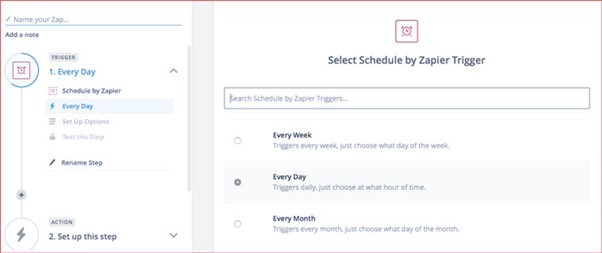
The platform can run Zap on a predefined schedule, which is very convenient for tasks that must be performed at a specific time or with a certain frequency.
The action can run every day or week, once a month, or on specific days. Scenarios can be very different – from creating a report and sending it by e-mail, to creating a database backup. Also, the application can make delayed publications on Twitter or Instagram at a given time.
Email parsing
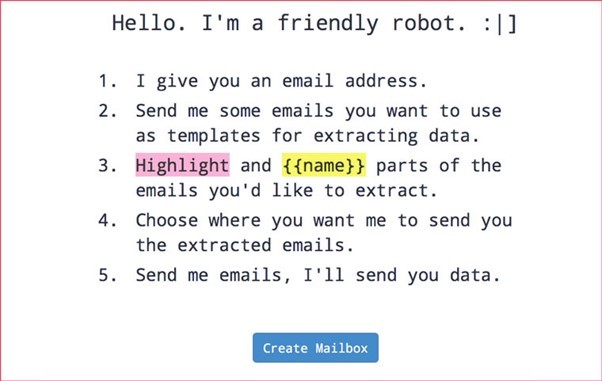
A parser is a separate tool available as part of the service that processes incoming messages and extracts the necessary data from them according to a given template. Further, the received information can be redirected to other applications.
To connect the parser, you need to register on parsier.zapier.com and create a virtual e-mail there, to which you will need to send all letters for analysis.
Using this functionality, you can, for example, extract customer contact information from a letter and send it directly to the CRM system. You can also monitor the responses to the mailing list from users who received the message.
Text translation
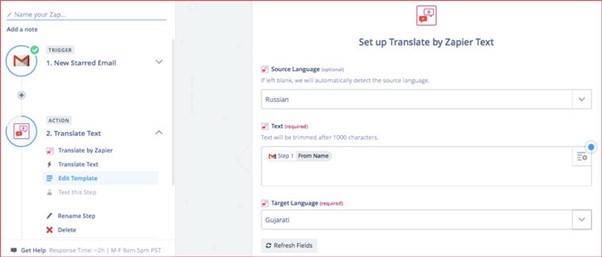
By integrating with machine translation services (Google Translate, DeepL), Zapier can translate text into different languages. Using one or another Zap, you can set up automatic translation of data from one or another source into the desired language and publish it on a social network or spreadsheet.
This function can be used by a technical support service that operates in several countries. Thus, the operator will immediately receive a message in a familiar language, saving time on using an online translator.
Also, when publishing new materials on a multilingual site, you can automate the process of translating new materials. In addition, translation will simplify communication between team members if the team includes members from different countries.
PayPal
By connecting PayPal or another popular payment gateway, you can automatically generate invoices as soon as a CRM sale closes. Also, after making a payment, data from PayPal can immediately go to the accounting program.
In addition, the system can send notifications of each new transaction to Slack, Telegram, e-mail or other communication channels. If the user decides to make a refund on the payment, this process can also be performed automatically. True, it is better to be careful with this option.
GitHub
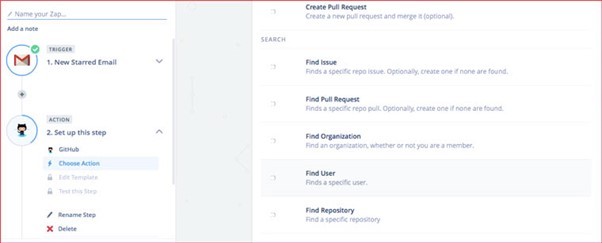
Using Zaps, you can monitor your favorite GitHub repositories for new comments, script updates, and other events and receive notifications about them through the selected communication channel.
Zapier also allows you to automate the assignment of new tasks, changing their status and linking GitHub with other popular developer tools (Jira, Trello, Asana, etc.).
Databases
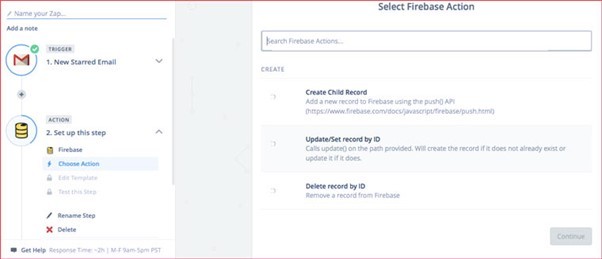
Zapier supports almost any database (MySQL, PostgreSQL, MongoDB, etc.), thanks to which you can set up automatic database updates whenever a specific event occurs.
In addition, with the help of the platform, the database will be able to interact with other tools – analytics systems, project management applications, social networks, etc.
Zapier Push
This is an official Chrome extension that allows you to create new Zaps directly from your browser. Using the extension, you can, for example, start sending a pre-configured message to Slack or Gmail.
It also gives you access to commonly used Zaps. Access to them can be configured at the touch of a button to significantly speed up the workflow. In this way, you can save time and simplify routine work.
Zapier Code
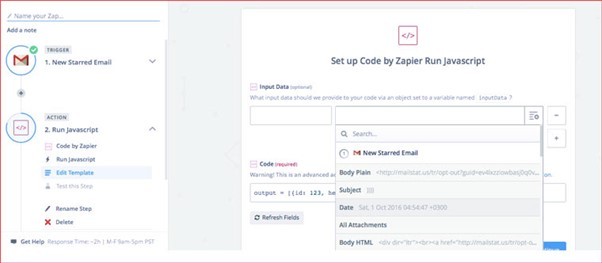
This functionality allows you to run your own JavaScript or Python scripts as part of your Zapier workflow. This will allow you to cope with more complex tasks that cannot be solved using standard integration tools.
Due to the popularity of these programming languages, it will not be difficult to find a developer to write the desired script. In this case, variables obtained from other synchronized applications can be inserted into the code. These can be email subject lines, customer information from CRM, tasks from Trello, etc.
Zapier cost
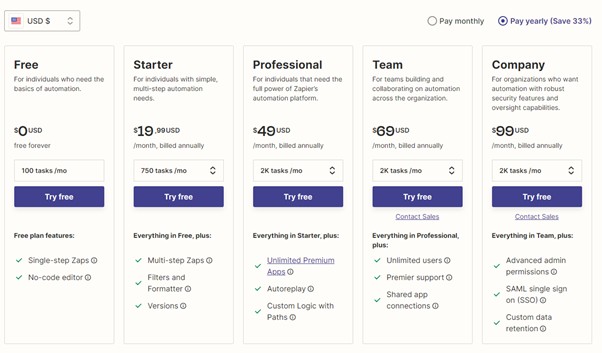
There are several pricing plans on the Zapier website. At the same time, there is also a free version of the service, which allows you to solve the most simple tasks.
- Free. Basic features are available in the free plan – one-step requests and 100 requests per month. At the same time, the number of connections is not limited.
- Starter (from $19.99 per month). Here you can already perform complex Zaps in several iterations. That is, for example, take contact information from CRM, generate an invoice from them, send it by mail and send a notification to Viber. Up to 750 tasks are available to the user within a month.
- Professional (from $49 per month). Here, you can use an unlimited number of premium applications, unlike cheaper plans. Also, if any zap gives an error during execution, the system will repeat the task until the end. In addition, in this tariff, you can set the execution conditions for a particular Zap.
- Team (from $69/mo). An unlimited number of users can be connected here. It is also important to note that this usage price will be when performing 2000 tasks per month. If your team needs more, you will have to pay extra.
- Company (from $99/mo). In the tariff for companies, the administrator role has been added, which can delegate rights to teams and individual users. Also, additional protection of transmitted data has been added here.









